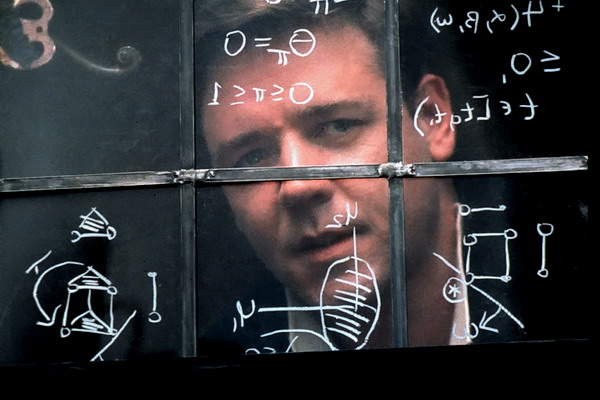Game Theory: Introduction

What is it and what does it eat with.
Game theory- This is a section of mathematical economics that studies the resolution of conflicts between players and the optimality of their strategies. The conflict can relate to different areas of human interest: most often it is economics, sociology, political science, less often biology, cybernetics and even military affairs. A conflict is any situation in which the interest of two or more participants, traditionally called players, is affected. For each player, there is a certain set of strategies that he can apply. Intersecting, the strategies of several players create a certain situation in which each player receives a certain result, called a win, positive or negative. When choosing a strategy, it is important to consider not only getting the maximum profit for yourself, but also the possible steps of the enemy, and their influence on the situation as a whole.
A brief history of development.

The basics of game theory originated in the 18th century, with the beginning of the enlightenment and the development of economic theory. For the first time, mathematical aspects and applications of the theory were presented in the classic book of 1944 by John von Neumann and Oscar Morgenstern "Game Theory and Economic Behavior." The first concepts of game theory were analyzed by antagonistic games, when there are losers and winners at their expense. Despite the fact that game theory considered economic models, up to the 50s of the 20th century it was just a mathematical theory. After, as a result of a sharp jump in the US economy after the Second World War, and, as a result, more funding for science, attempts to put the theory of games into practice in economics, biology, cybernetics, technology, and anthropology begin. During the Second World War and immediately after it, the military became seriously interested in the theory of games, who saw in it a powerful apparatus for studying strategic decisions. In the early 50sJohn Nash (pictured) develops analysis methods in which all participants either win or lose. These situations are called Nash equilibrium.. According to his theory, the parties should use the optimal strategy, which leads to the creation of a stable equilibrium. It is beneficial for the players to maintain this balance, since any change will worsen their situation. These works of Nash made a significant contribution to the development of game theory, and mathematical tools for economic modeling were revised. John Nash shows that A. Smith’s classical approach to competition, when each for himself, is not optimal. Strategies are more optimal when everyone is trying to do better for themselves, doing better for others. Over the past 20 - 30 years, the importance of game theory and interest has grown significantly, some areas of modern economic theory cannot be stated without the application of game theory. Thomas Schelling made a big contribution to the application of game theory, 2005 Nobel Laureate in Economics, "Conflict Strategy."
How it works
It seems to me that the meaning of game theory is most easily explained in the Prisoner's Dilemma, the classic wording of which is:
Двое преступников, А и Б, попались примерно в одно и то же время на сходных преступлениях. Есть основания полагать, что они действовали по сговору, и полиция, изолировав их друг от друга, предлагает им одну и ту же сделку: если один свидетельствует против другого, а тот хранит молчание, то первый освобождается за помощь следствию, а второй получает максимальный срок лишения свободы (10 лет). Если оба молчат, их деяние проходит по более лёгкой статье, и они приговариваются к 6 месяцам. Если оба свидетельствуют против друг друга, они получают минимальный срок (по 2 года). Каждый заключённый выбирает, молчать или свидетельствовать против другого. Однако ни один из них не знает точно, что сделает другой. Что произойдёт?
Presenting the game in the form of a matrix we get:
| Criminal B Silence Strategy | Criminal B The Betrayal Strategy | |
|---|---|---|
| Criminal A Silence Strategy | Half a year to everyone | 10 Years to Criminal A Release Criminal B |
| Criminal A Strategy to “betray” | 10 Years to Criminal B Release Criminal A | 2 years each |
Now imagine the development of the situation, putting ourselves in the place of prisoner A. If my accomplice is silent, it is better to hand him over and go free. If he says, then it’s also better to tell everything, and get only two years, instead of ten. Thus, if each player chooses what is best for him, both will surrender each other and receive two years, which is not an ideal situation for both. If everyone thought about the common good, they would receive only half a year.
Game types
Cooperative \ non-cooperative game
A cooperative game is a conflict in which players can communicate with each other and join in groups to achieve the best result. An example of a cooperative game is the Bridge card game, where each player’s points are considered individually, but the pair with the highest amount wins. Of the two types of games, non-cooperative ones describe situations in great detail and produce more accurate results. Cooperatives consider the process of the game as a whole. Despite the fact that these two types are opposite to each other, it is quite possible to combine strategies, which can be more useful than following any one.
With zero sum and non-zero sum
A zero-sum game is a game in which the gain of one player equals the loss of another. For example, a banal argument: if you won the amount N, then someone lost the same amount N. In a game with a nonzero sum, the total price of the game can change, thus, bringing benefits to one player, I do not take away its price from another. Chess is an excellent example: turning a pawn into a queen, player A increases the total amount of his pieces, while not taking anything from player B. In games with a non-zero sum, losing one of the players is not a prerequisite, although such an outcome is not excluded.
Parallel and serial
Parallel is a game in which players make moves at the same time, or the move of one player is unknown to another until the general cycle is completed. In a sequential game, each player has information about the previous move of his opponent before making his choice. And it is not necessary to be complete information, which leads to the next type.
With complete or incomplete information
These types are a subspecies of consecutive games, and their names speak for themselves.
Meta-games
These games are “lemmas” of game theory. They are useful not by themselves, but in the context of any conflict, expanding its set of rules.
In any conflict, the types are combined, thus defining the rules of the game, be it a cooperative sequential game with zero sum, or a meta-game with incomplete information.
Practical problems
Of course, it should be pointed out that there are certain limits to the application of the analytical tools of game theory. In the following cases, it can be used only if additional information is obtained.
Firstly, this is the case when players have different ideas about the game in which they participate, or when they are not sufficiently informed about each other's capabilities. For example, there may be unclear information about competitor payments (cost structure). If incomplete information is characterized by not too complicated information, then one can apply the experience of such cases, taking into account certain differences.
Secondly, game theory is difficult to apply in many equilibrium situations. This problem can arise even during simple games with a simultaneous choice of strategic solutions.
Thirdly, if the situation of making strategic decisions is very complicated, then players often cannot choose the best options for themselves. For example, several enterprises may enter the market at different times or the reaction of enterprises already operating there may be more complex than being aggressive or friendly.
It has been experimentally proved that when expanding the game to ten or more stages, players are no longer able to use the appropriate algorithms and continue the game with equilibrium strategies.
Unfortunately, real-world situations are often very complex and change so fast that it is impossible to accurately predict how competitors will respond to changing tactics. Nevertheless, game theory is useful when it is necessary to determine the most important and requiring consideration factors in a decision-making situation in a competitive environment. This information is important because it allows you to take into account additional variables or factors that have the ability to influence the situation, and thereby increase the effectiveness of the solution.
Conclusion
In conclusion, it should be emphasized that game theory is a very complex field of knowledge. When referring to it, one must observe certain caution and clearly know the boundaries of application. Too simple interpretations are fraught with hidden danger. Analysis and advice based on game theory because of their complexity are recommended only for particularly important problem areas. Experience shows that the use of appropriate tools is preferable when making one-time, fundamentally important planned strategic decisions, including the preparation of large cooperative agreements.
If the topic turns out to be interesting for the community, in the following articles I will try to expand on the types of games and their strategies.
